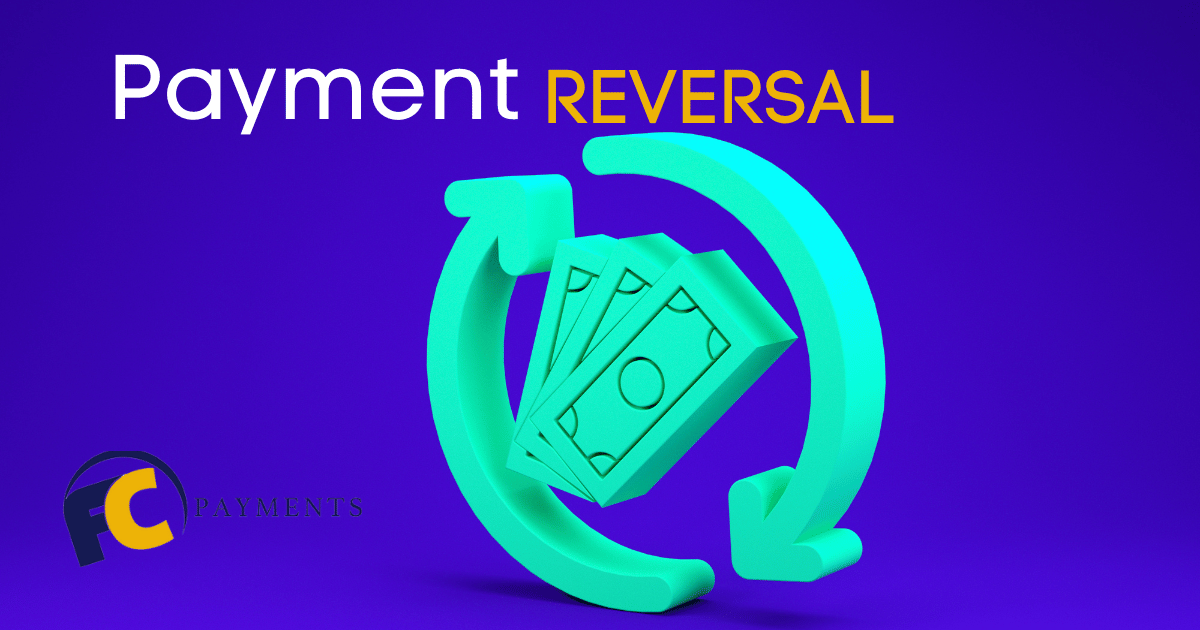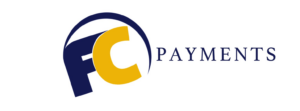
What Is a Payment Reversal & How Does It Affect Your Business?
What Is a Payment Reversal & How Does It Affect Your Business?
In the ever-evolving world of digital transactions, payment reversals can be a thorn in the side of businesses. They not only disrupt operations but can also lead to financial losses and reputational damage. The good news is that understanding and managing payment reversals effectively, including Temporary Credit Reversals, can help businesses safeguard their bottom line and maintain healthy customer relationships. So, are you ready to dive into the world of payment reversals and learn how to tackle them head-on?
Our high risk merchant account providers uncover the various types of payment reversals, delve into temporary credit reversals, and explore strategies for avoiding and managing them. Armed with this knowledge, you’ll be better equipped to navigate the complex landscape of digital transactions, protect your business from potential pitfalls, and foster a positive customer experience.
Quick Summary
- Understanding Temporary Credit Reversals is essential for businesses to minimize the risk of payment reversals.
- Merchants can reduce payment reversals by ensuring accurate transaction information, using clear billing descriptors, and processing authorization reversals promptly.
- First Card Payments provides a secure payment solution that helps protect merchants from lost revenue due to temporary credit reversal fees.
Understanding Temporary Credit Reversals
Temporary credit reversals are instances when a credit or debit card issuer or other financial institution temporarily reverses a credit transaction on the buyer’s account. These reversals often occur due to disputes, fraud, or unauthorized transactions. When customers don’t recognize a transaction, they may request a chargeback, resulting in payment reversals, including a provisional credit reversal.
To minimize the risk of payment reversals, it’s crucial for businesses to understand why they happen and how they impact both the customer and the merchant. In the following sections, we’ll explore the reasons behind provisional credits, their effects on customers’ bank accounts, and how businesses can take proactive measures to reduce payment reversals.
Why do banks issue provisional credits?
Banks issue provisional credits to protect customers from potential fraud or unauthorized transactions. These temporary credits allow customers to have access to the funds while the acquiring bank investigates the dispute. The issuing bank plays a crucial role in this process. Payment reversals can be broadly categorized into disputes, fraud, and unauthorized transactions, which may lead to the issuance of provisional credits. To keep track of these transactions and credits, it is essential to review your bank statement regularly.
Issuing provisional credits acts as a safety net for customers, giving them peace of mind knowing that their funds are protected while the merchant’s bank conducts its investigation. By understanding the reasons behind provisional credits, merchants can develop strategies to minimize their occurrences and maintain a smooth transaction process.
How does a temporary credit affect a customer’s bank account?
When a temporary credit is issued, it reverses the transaction and restores the funds to the customer’s account. Provisional credits provide immediate funds to the customer while the bank investigates potential disputes or issues. To prevent temporary credit reversals, merchants should ensure that transaction information is accurate, billing descriptors are clear, and authorization reversals are conducted promptly.
Temporary credits play a significant role in protecting customers from potential fraud and unauthorized transactions. By understanding how these credits affect customers’ bank accounts, merchants can take appropriate measures to ensure a seamless transaction process and maintain customer satisfaction.
Types of Payment Reversals
Payment reversals come in various forms, but they can be categorized into three primary types: authorization reversals, refunds, and chargebacks. As payment reversals fall into these categories, authorization reversals are instantaneous payment reversals that often occur without the customer’s knowledge. They typically happen when a transaction is being processed, such as when a merchant recognizes an incorrect amount has been entered or when a customer wishes to pay with a different card.
Refunds are transaction reversals where funds are returned to the customer. Merchants issue refunds to provide customers with a return of their funds in the event of dissatisfaction with a purchase or an error in processing.
Chargebacks, on the other hand, are initiated by customers who challenge purchases made with credit cards. These payment reversals can be costly and time-consuming for merchants, making it essential to understand and manage them effectively.
Avoiding Temporary Credit Reversals
To reduce payment reversals, merchants should focus on three key strategies: ensuring accurate transaction information, using clear billing descriptors, and processing authorization reversals promptly.
In the following subsections, we’ll discuss each of these strategies in detail and explain how they can help merchants avoid temporary credit reversals and maintain a seamless transaction process.
Accurate transaction information
Accurate transaction information is essential for avoiding discrepancies that could result in payment reversals. By ensuring that the exact amount is being charged to the customer’s account, businesses can avoid inconsistencies that could lead to reversals. To ensure accurate transaction information, businesses should verify customer information, such as billing address and payment method, before processing the transaction. Additionally, businesses should ensure that the payment amount is correct and that the customer is aware of any applicable fees or taxes.
Inaccurate transaction information can result in customer dissatisfaction and financial losses for the business, as well as disputes and chargebacks that can be both costly and time-consuming to address. By prioritizing accurate transaction information, merchants can reduce the likelihood of payment reversals and maintain a positive customer experience, even when handling a separate transaction.
Clear billing descriptors
Clear billing descriptors assist buyers in recognizing and recalling their transactions accurately, thus reducing the probability of unwarranted disputes or chargebacks. Having clear billing descriptors is essential for fostering trust and credibility with customers, enabling them to accurately identify and recognize transactions on their credit card statements, thereby decreasing the probability of chargebacks and sustaining positive customer relationships.
By using clear billing descriptors, businesses can help customers easily identify and recognize transactions on their credit card statements, thus decreasing the chances of chargebacks and preserving positive customer relationships. This simple yet effective strategy can play a significant role in avoiding temporary credit reversals and maintaining customer satisfaction.
Timely authorization reversals
Processing authorization reversals promptly can have several benefits for both merchants and customers. It guarantees that customers are not charged for transactions they did not intend to make, which helps maintain a favorable customer experience and avoids unnecessary disputes or complaints. Additionally, timely reversals facilitate clearing up any confusion within the organization regarding the status of transactions, ensuring accurate records are kept, and preventing potential mistakes or discrepancies in financial reporting.
By performing an authorization reversal in a timely manner, merchants can prevent chargebacks and the associated fees and penalties. This not only helps businesses safeguard their bottom line but also contributes to a positive customer experience, ultimately fostering customer loyalty and trust.
Managing Provisional Credits
Managing provisional credits involves monitoring transactions, identifying potential fraud, and following security guidelines. Provisional credits may temporarily boost a customer’s bank account balance, but if the payment is not approved, the credit will be reversed, and the customer’s bank account balance will be decreased. To prevent provisional credits, merchants should ensure that transaction information is accurate, billing descriptors are clear, and authorization reversals are conducted promptly.
By effectively managing provisional credits, merchants can minimize the risk of payment reversals and maintain a smooth transaction process. This not only helps protect the business from potential financial losses but also contributes to a better overall customer experience.
Fraud Prevention and Security Measures
Implementing fraud prevention measures, such as fraud detection software and strengthened card verification processes, can help reduce payment reversals. Payment fraud is pervasive, but merchants can avoid fraudulent transactions with some change in operations.
In the following subsections, we’ll delve deeper into these fraud prevention strategies and explain how they can help businesses safeguard their transactions and maintain a secure payment environment.
Implementing fraud detection software
Fraud detection software plays a crucial role in identifying and preventing fraudulent transactions. There are two primary categories of fraud detection software: transaction monitoring software, which utilizes algorithms to identify potentially fraudulent activity, and identity verification software, which confirms the identity of customers. By utilizing fraud detection software, businesses can enhance the accuracy in identifying fraudulent transactions, decrease manual effort in detecting fraud, and heighten customer trust and satisfaction.
And don’t forget about friendly fraud, Friendly fraud takes place when an authorized credit or debit card holder contacts the bank directly for reimbursement rather than following the normal route of requesting a refund from the merchant they did business with.
To successfully implement fraud detection software, businesses should identify the types of fraud to be detected, select the appropriate software for their needs, configure the software to meet their requirements, monitor the software and make necessary adjustments, and educate staff on its use. By implementing fraud detection software, businesses can protect themselves from potential financial losses and maintain a secure transaction environment.
Strengthening card verification processes
Strong card verification processes are essential in ensuring transaction security and preventing fraud. By authenticating the customer’s identity, organizations can guarantee that the transaction is secure and protect themselves from potential financial losses. Moreover, robust card verification processes can help maintain customer trust and confidence in the payment system.
Businesses can bolster card verification processes by deploying fraud detection software, verifying transaction information, employing clear billing descriptors, and executing timely authorization reversals. By strengthening card verification processes, businesses can reduce the likelihood of fraudulent transactions and maintain a secure and trustworthy payment environment.
Impact of Temporary Credit Reversals on Merchants
Temporary credit reversals can have a negative impact on merchants, resulting in lost revenue, fees, and potential reputational damage. In addition to disrupting operations and straining financial resources, payment reversals can also harm a merchant’s reputation. A high payment reversal rate can lead to decreased customer loyalty and increased anti-fraud controls from banks and card issuers.
To minimize the risk of payment reversals, merchants should adhere to security and seller protection standards, examine orders for suspicious activity or fraud, and identify and preempt potential fraud risks. By taking these proactive measures, businesses can protect themselves from the negative consequences of temporary credit reversals and maintain healthy customer relationships.
First Card Payments
First Card Payments is a payment processing solution that facilitates businesses in minimizing payment reversals and enhancing overall transaction security. By offering services such as reduced interest charges and increased convenience for customers, First Card Payments can help businesses reap the benefits of accepting card payments. Additionally, Tidal’s official chargeback assistant can help businesses counter payment reversals and reduce processing fees by up to 35%.
By leveraging the expertise and solutions provided by First Card Payments, businesses can effectively manage payment reversals, improve transaction security, and maintain a positive customer experience. This not only helps safeguard their bottom line but also fosters customer trust and loyalty.
Full Summary
In conclusion, understanding and managing payment reversals effectively is crucial for businesses in the digital transaction landscape. By implementing strategies such as ensuring accurate transaction information, using clear billing descriptors, processing authorization reversals promptly, and adopting robust fraud prevention measures, businesses can minimize the risk of payment reversals and maintain a seamless transaction process.
As the world of digital transactions continues to evolve, staying informed and proactive in managing payment reversals is essential for businesses to thrive. By taking the necessary steps to safeguard transactions and maintain customer satisfaction, businesses can confidently navigate the complex landscape of digital payments and build a strong foundation for long-term success.
Frequently Asked Questions
What does temporary credit reversal mean?
Temporary credit reversal is when the bank adjusts the customer’s outstanding balance on their credit card to return the funds from the original transaction.
This process is beneficial for customers who have made a purchase with their credit card and then need to return the item or cancel the service. It allows them to get their money back quickly and without any hassle.
The process is simple.
Why did I get a reversal credit?
You received a reversal credit because the charge was initiated by either the issuer or the buyer, and there are valid reasons to reverse it.
Can temporary credit be taken back?
A provisional credit is not permanent and can be reversed by the bank if the disputed transaction turns out to be valid. Therefore, temporary credit can be taken back.
What is the difference between a refund and a reversal?
A refund involves returning money to the customer’s account, while a reverse cancels the transaction, and the funds don’t transfer from the customer’s account to the merchant’s account.
What is a temporary credit reversal?
A temporary credit reversal occurs when a financial institution reverses a credit transaction on the buyer’s account, usually due to disputes, fraud, or unauthorized transactions.
These reverses can be initiated by the buyer, the financial institution, or the merchant. The process of reversing a credit transaction can be complex and time-consuming, as it involves multiple parties and requires the coordination of multiple documents.
I am passionate about delivering results and helping my clients succeed. With my expertise in SEO, branding, and marketing, I lead the agency’s efforts to create and implement effective strategies that drive business growth. Our all-inclusive approach sets us apart from other digital media companies and ensures that our clients receive the full range of services they need for online success. If you can think of it, we can build it!
Zulu Shack Creative team members thrive on momentum. Like Zulu warriors, we strive to spearhead your idea with speed and quality.
When I’m not helping my team implement new digital marketing strategies, I enjoy playing music, hosting poker nights, reading Stephen King novels, and spending time with my wife and baby daughter.
No Comments
Sorry, the comment form is closed at this time.










